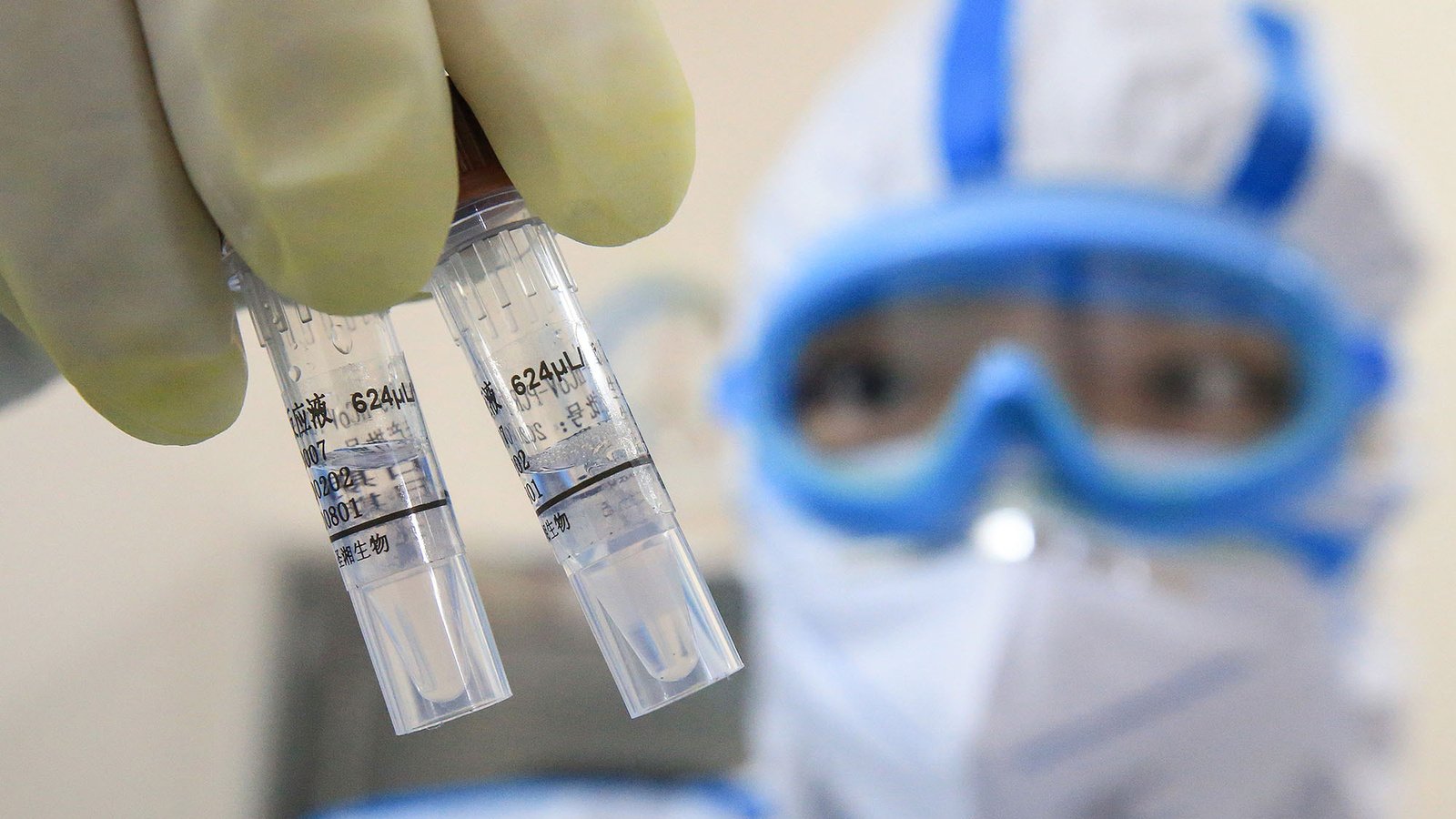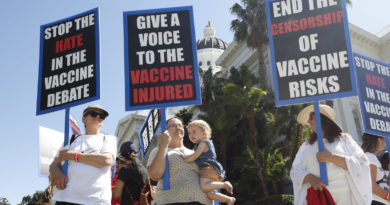Will the World Ever Solve the Mystery of COVID-19’s Origin?

Introduction
What touched off the COVID-19 pandemic remains a mystery. Several dominant hypotheses exist, but each lacks sufficient evidence to explain the cause of the crisis. A growing number of experts are calling for further investigation in the Chinese city of Wuhan, where the outbreak is widely believed to have started. However, the scientific inquiry is being marred by political tensions between Washington and Beijing.
What is known about COVID-19’s origin?
More From Our Experts
Many scientists believe that SARS-CoV-2, the coronavirus that causes COVID-19, spread from animals to humans—known as zoonotic transmission—in late 2019. Some researchers have said the virus originated in bats, like other similar coronaviruses. But there are several possibilities: a naturally emerging virus that infected people outside of a laboratory; a naturally emerging virus that was studied inside a lab and leaked; or a virus that was produced as a result of experimentation in a lab.
More on:
There is no definitive evidence yet for any one of these hypotheses. “If there is any consensus, it’s that this is a very complicated issue,” says CFR’s Yanzhong Huang. “There needs to be further work done to find a conclusive answer.”
Until recently, the idea that COVID-19 was transmitted to humans in a lab was largely viewed as implausible. In the first weeks of the pandemic, much focus was placed on a so-called wet market in Wuhan as a possible place of origin, but researchers in China soon quashed the idea after discovering earlier cases of the virus with no connection to the market. Several widely shared letters by small groups of scientists from different countries pushed strongly in the direction of a natural origin, calling suggestions that COVID-19 emerged in a lab a conspiracy theory. Following an early 2021 mission to China, a World Health Organization (WHO) delegation called a lab leak “extremely unlikely.”
But a U.S. intelligence report that several researchers at a prominent Wuhan lab studying bat coronaviruses became ill in November 2019 has made accidental lab transmission a more credible hypothesis for some. The lab, the Wuhan Institute of Virology (WIV), was the first in China to achieve the highest level of biocontainment, known as Biosafety Level 4 (BSL-4). (There are several dozen facilities around the world that have reached this level.) However, U.S. diplomats who visited the lab in 2018 raised deep concerns about vulnerabilities, including shortages of sufficiently trained technicians and investigators. The Wuhan Center for Disease Control and Prevention has likewise been cast into the spotlight over its work on bat coronaviruses. There have been a few documented cases of pathogens leaking from laboratories in the past. For example, a leak from a Beijing lab is thought to be the cause of a small outbreak of severe acute respiratory syndrome (SARS) in 2004.
More From Our Experts
What did the WHO find in its investigation?
A delegation of WHO scientists traveled to Wuhan in January 2021 for a four-week joint study with Chinese counterparts. The team followed many lines of investigation, including evidence that COVID-19 was circulating in China in the fall of 2019, and published their findings in a several-hundred-page report. In the report, the group stated that natural zoonotic transmission was the most likely among several possibilities, though scientists have yet to find samples of SARS-CoV-2 in any animals thought to be a possible host.
The WHO study also looked at the possibility that the virus was transmitted to humans through frozen food imported to China in the cold chain, a theory put forth by Chinese state media. But the team determined that there was “no conclusive evidence for foodborne transmission.”
More on:
Similarly, it deemed the possibility that the virus escaped from a laboratory highly unlikely: the researchers dismissed the hypothesis that the virus was purposely engineered, and they separately noted that the risk that the virus was accidentally cultured in a lab was “extremely low.”
However, critics have said the inquiry lacked transparency and independence. The WHO scientists were reportedly severely constrained in their mission: Chinese officials secured veto rights over who was involved; refused to share raw data on early COVID-19 cases; and restricted the team’s access to investigate different hypotheses, though the group did visit WIV for several hours. “This is part of the problem for the WHO, a member-state organization, that you certainly don’t have unfettered access,” says CFR’s Huang. “That’s the reality.”
Upon the report’s release, WHO chief Tedros Adhanom Ghebreyesus said that further investigation was needed to reach a firm conclusion about the virus’s emergence, and more than a dozen countries expressed concerns over the study in a joint statement. Scientists from around the globe called for a new and unrestricted investigation. Some experts organized their own collective to investigate the virus’s origin, Vanity Fair reported.
How have Chinese officials and scientists responded?
Chinese officials have consistently rejected not only the hypothesis that the virus originated at the Wuhan laboratory, but that it originated in China at all. Additionally, Shi Zhengli, the top bat coronavirus expert at WIV, has said the virus didn’t leak from her laboratory. (In April 2020, the U.S. National Institutes of Health pulled funding for a research project on coronaviruses in which the Wuhan institute was a chief partner.) Meanwhile, Beijing has called on the WHO to investigate the possibility that the pandemic started in other countries, including at a U.S. military lab in Maryland.
The accusations come amid heightened tensions between Washington and Beijing. Throughout 2020, the Donald Trump administration repeatedly blamed China for the pandemic, adding further friction to a relationship already strained by a trade war and U.S. responses to China’s rights abuses in Xinjiang and Hong Kong, among other issues. Many critics say Trump’s use of inflammatory rhetoric such as “China virus” and “kung flu” contributed to a rise in anti-Asian bias in the United States amid the pandemic. President Joe Biden has tread more carefully, choosing not to support any one theory about the virus’s origin; but he and top officials in his administration have persistently called for further investigation in China, which has angered Beijing.
Why does it matter?
Public health experts say uncovering how this pandemic started can help prevent the next one. A clear understanding of how a virus makes its way to humans sheds light on the risks associated with different behaviors: this includes various forms of human-animal interaction, such as farming, herding, and selling animals, as well as scientific research in the field or in laboratories.
Moreover, pinpointing the virus’s origin in humans improves the scientific understanding of how such viruses work, particularly how they move and change across species. Experts are already urging governments to make major investments to detect future epidemic threats: a CFR Independent Task Force recommends an integrated network of national epidemic surveillance systems.
This pandemic has demonstrated the heavy economic toll that comes with major health crises. In late 2020, Harvard University economists estimated that the cost of the COVID-19 pandemic in the United States alone would amount to at least $16 trillion. This includes lost economic output; premature deaths from COVID-19 and other illnesses; and long-term health-care costs, including for mental health. The International Monetary Fund (IMF) and World Bank estimated that the pandemic pushed upward of 119 million people into extreme poverty in 2020.
What comes next?
Scientists warn that the more time that passes, the more challenging it will be to track down the origin of COVID-19. For instance, antibodies for the virus eventually disappear—experts are still working to understand how long COVID-19 antibodies last—so researchers hoping to trace clusters of infections around the start of the pandemic are working within a limited timeframe.
At the WHO’s annual meeting in May 2021, countries including the United States, Australia, Japan, and Portugal called for a new probe into the virus’s origin. At the same time, Biden asked U.S. intelligence agencies to up their investigative efforts on the issue and report their findings to the White House within ninety days.
However, China’s foreign ministry denounced the continued U.S.-led push, claiming that Washington “does not care about facts or truth, nor is it interested in serious scientific origin tracing.” Experts say that given China’s rebuffs, there’s little chance it will allow the kind of access foreign investigators are asking for, and the WHO does not have authority to require China to comply with orders for an investigation. Some health experts caution that the discord could undermine global efforts to end the pandemic. “If there’s some turning down of the geopolitical heat between these two great powers, we could create some space to perhaps do some of the things that we need to do,” CFR’s David P. Fidler told Nature.
The controversy has additionally renewed calls to bolster biosafety measures. “It is now becoming important for us to develop certain protocols for scientists to follow while conducting biological research on the one hand,” says CFR’s Huang. “And on the other hand, we need to review existing international laws and norms, like the Biological Weapons Convention and the International Health Regulations, to strengthen their regulatory teeth to enforce those norms.”
*** This article has been archived for your research. The original version from Council on Foreign Relations can be found here ***


